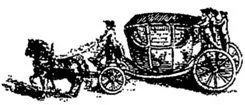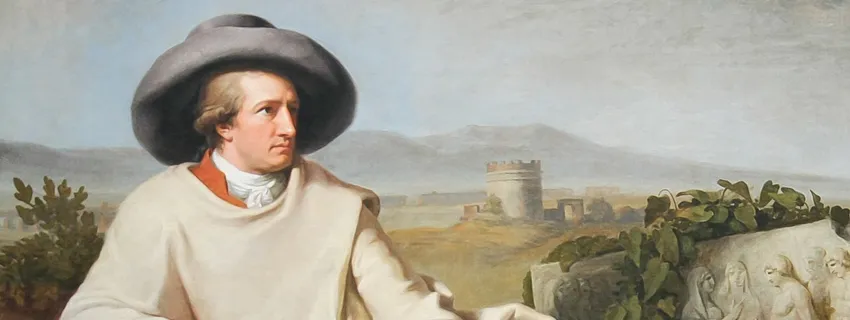Published:
Author: Antonio Maria Guerra
Antica Trattoria Ballotta
GALILEO'S TRATTORIA

There are places where food, no matter how delicious, acquires additional flavor thanks to history, territory and people. One such place can be found in the Italian Region of Veneto: the Antica Trattoria Ballotta, where since the Sixteenth Century delicious specialties are served to people of all kinds. These include the famous scientist Galileo Galilei and many other famous personalities.

Trattoria Ballotta: four hundred years (and more) of typical food.
 Antica Trattoria Ballotta, one of the most traditional restaurants in the Veneto region, has become ‘ancient’ (‘antica’) not for the stroke of genius of an advertising expert but, as it should be, thanks to its many centuries of history. It’s located at the foot of the Euganean Hills, on volcanic soil, whose fertility was already well known to the ancient Romans. In the Middle Ages, the friars of Saint Augustine took care of the area, erecting some structures, including a shelter for pilgrims (*1) and a small convent. Not far from the convent was built an edifice that, during the ‘500, the religious sold to a private.
Antica Trattoria Ballotta, one of the most traditional restaurants in the Veneto region, has become ‘ancient’ (‘antica’) not for the stroke of genius of an advertising expert but, as it should be, thanks to its many centuries of history. It’s located at the foot of the Euganean Hills, on volcanic soil, whose fertility was already well known to the ancient Romans. In the Middle Ages, the friars of Saint Augustine took care of the area, erecting some structures, including a shelter for pilgrims (*1) and a small convent. Not far from the convent was built an edifice that, during the ‘500, the religious sold to a private.
He transformed it into a tavern (‘osteria’). Situated in a strategic position, this place soon became a reference point for travelers, starting to be used as a staging post.  Almost immediately, people noticed that its food was excellent. This was how the tavern started to be famous: a celebrity further increased by the visit of well-known customers. Personalities like Galileo Galilei, who did not disdain to stop for a ‘delicious’ break during the journeys to visit his favorite butcher in Abano. Personalities like Giacomo Casanova, who proved to be not just an admirer of beautiful women, but also of the pleasures of the table.
Almost immediately, people noticed that its food was excellent. This was how the tavern started to be famous: a celebrity further increased by the visit of well-known customers. Personalities like Galileo Galilei, who did not disdain to stop for a ‘delicious’ break during the journeys to visit his favorite butcher in Abano. Personalities like Giacomo Casanova, who proved to be not just an admirer of beautiful women, but also of the pleasures of the table.
The definitive consecration of what in time became a proper restaurant occurred with its inclusion in the register of the Historic Places of Italy. On this occasion, since it was not possible to establish precisely the date of birth of the ‘osteria’, it was decided that it was undoubtedly prior to 1605, whereas the right one should most likely be in the middle of the ‘500 (this explains the title of the paragraph).
*1: The ‘ospitale peregrinorum’ was built by the friars in honor of Saint Leonard.
A trattoria and the Euganean Hills.
Ballotta, Galileo’s restaurant, is in Torreglia, a small town located on the slopes of the Euganean Hills, not far from the city of Padua, in the Italian region of Veneto.

Goethe eats at Trattoria Ballotta.
In September 1786, the famous German writer J.W. von Goethe ate at the Trattoria Ballotta, enjoying particularly some dishes: the ’baccalà mantecato’ (creamed cod), the Montagnana ham and the stuffed quail.
Read more
Everything was accompanied by more than one glass of Friularo wine.
It seems that on this occasion he said:
“Die ganzen menù hat mir sehr geschmeckt und verliebt wie eine Dame”
(“I really enjoyed the menù and fell in love with it like with a woman”)


The most famous specialties served at Trattoria Ballotta.
Here follow some of the most typical Venetian specialties usually served at Trattoria Ballotta. They are all the ‘standard bearers’ of the food tradition of this Italian region in the world.

The ‘Torresano’.
‘Torresano’ (or ‘toresan’), is the Venetian dialect for ‘pigeon’: it seems that the word comes from a particular kind of tower, the ‘dovecot tower’, where this bird was once bred primarily to be served on the tables of the richest nobility.

The ‘Gran Bollito alla Padovana’.
To make the ‘Gran Bollito alla Padovana’, pieces of selected meat (beef, veal and pork) have to be boiled separately. However, what makes this recipe really ‘Paduan’ is the addition of the meat of the famous ‘gallina padovana’ (‘Paduan hen’).

Bigoli with hare sauce.
‘Bigoli’ are a kind of long pasta prepared (according to the original recipe) with soft wheat, water and salt. Their typical roughness makes them particularly suitable to retain condiments such as, for example, hare sauce (very popular in the Euganean Hills area).

Torreglia, the town of Trattoria Ballotta.
Trattoria Ballotta gets a good portion of its indisputable charm from the fascinating place where it’s located: the lush slopes of the Euganean Hills, part of the municipality of Torreglia. The origins of this town are very old: archaeological discoveries have proved that there are settlements in the area since the Neolithic. The Romans were the first to appreciate the fertility of this territory, a characteristic mainly due to its volcanic origins. During the Middle Ages, the ecclesiastical authorities carried out, among other things, reclamation works, thus contributing to the development of agriculture.
Read more
In the Fifteenth Century, this zone was annexed to the Republic of Venice: an influence witnessed by the presence of sumptuous villas that still today embellish the landscape. Among these, it’s important to mention the magnificent Villa dei Vescovi, in the district of Luvignano.
Starting from the Nineteenth Century, Torreglia began to depend on tourism, driven by the beauty of its places and the proximity to renowned spas. A dense entrepreneurial fabric started to develop after the second post-war period.


Scientists, writers and intellectuals eat at Trattoria Ballotta.
During the centuries Antica Trattoria Ballotta had many guests: among them, a large number of famous people: scientists, writers, politicians, intellectuals and so on. Personalities who, once seated at the table, had the opportunity to reclaim part of their human side by appreciating good food. Personalities whose visit left an indelible mark, translating into a fascinating atmosphere quite perceptible still today eating in the restaurant.
Here follows a brief excursus of some of the most famous customers of the trattoria: a list that, although incomplete, is very indicative.

Galileo Galilei
Astronomer, mathematician and philosopher, Galilei lived in Italy between the Sixteenth and the Seventeenth Centuries. Among the many contributions he made to science, his commitment to the Copernican theory, according to which the Sun, rather than the Earth, is at the center of our solar system. (Read more)

Giacomo Casanova
Casanova was for sure one of the most ‘interesting’ citizens of the Venetian Republic in the Eighteenth Century. He had many interests: he was a poet, a diplomat, a philosopher and much more. His greatest passion was that for women: so great to gain the reputation of ‘prince of seducers’. (Read more)

Daniele Manin
Man of great culture, Manin lived in the Nineteenth Century. Great opposer of the Austrian domination over Venice, he was imprisoned for his passionate patriotic activity. Freed by the revolting people, he was appointed President of the newly formed Republic of San Marco. (Read more)

Ugo Foscolo
Ugo Foscolo, one of the most illustrious Italian writers, lived in the period between the 18th and the 19th centuries. Fine literate, he was an exponent of Neoclassicism and Pre-Romanticism. His life and works were deeply influenced by his strong patriotic attachment to his country. (Read more)

J.W. Von Goethe
J.W. von Goethe lived between the 18th and 19th centuries. He is considered one of the greatest German writers, author of novels, plays and poems like Faust.
He had a great passion not only for writing but also for art, philosophy and science. (Read more)

Gabriele D’Annunzio
D’Annunzio was a histrionic intellectual, point of reference for the Italian culture between the end of the 19th and the beginning of the 20th centuries. Big proponent of Decadentism, he was not just a writer, but also a politician, a soldier, a poet and a journalist. (Read more)

The music of Pertile for Ballotta.
Aureliano Pertile was born in 1885 in Montagnana, a Venetian town not distant from the Trattoria Ballotta. He was a tenor of international fame, one of the favorites of the great conductor Arturo Toscanini and for a long time he was a star of the Metropolitan in New York.


The great passion of Galileo for food.
Not many know that Galileo Galilei, in addition to being a scientific genius, was a refined lover of good food.

Trattoria Ballotta: contacts.
Address: Via Romana 57
35038 Torreglia (PD)
Website: www.ballotta.it
Mail: info@ballotta.it
Tel.: +39 049 5212970
fax: +39 049 9933350
Copyright information.
The images displayed in this page belong to WebFoodCulture and Antica Trattoria Ballotta, with the exception of:
Public Domain images
- Galileo Galilei, J. Sustermans, 1640 (Wikipedia Link) {PD-Art} {PD-US}
- Goethe in the Roman countryside, 1787, J.H.W. Tischbein (Wikipedia Link) {PD-Art} {PD-US}
- Giacomo Casanova, F.G. Casanova, 1750-1755 (Wikipedia Link) {PD-Art} {PD-US}
- Daniele Manin, H. Voland, 1852 (Wikipedia Link) {PD-US}
- Ugo Foscolo, F.X.Pascal Fabre, 1813 (Wikipedia Link) {PD-Art} {PD-US}
- J.W.von Goethe, J.K. Stieler, 1828 (Wikipedia Link) {PD-Art} {PD-US}
- Gabriele D’Annunzio, United States Library of Congress (Wikipedia Link) {PD-US}
- Aureliano Pertile, 1910, unknown author (Wikipedia Link) {PD-US}




